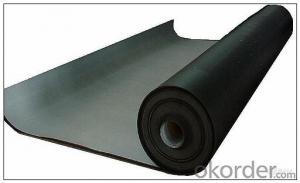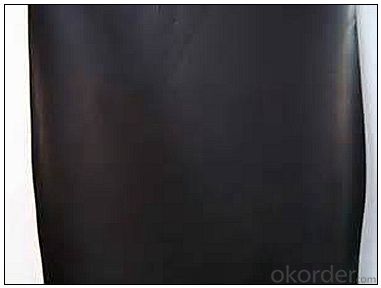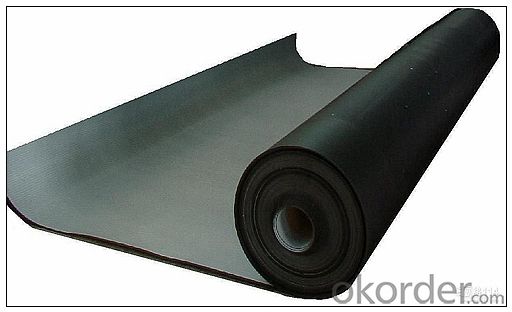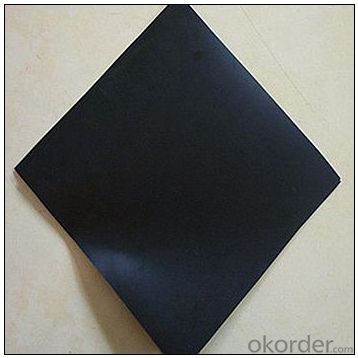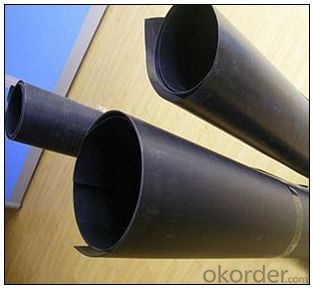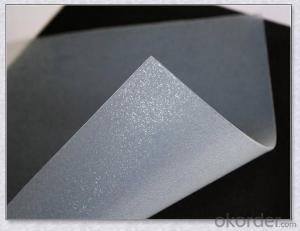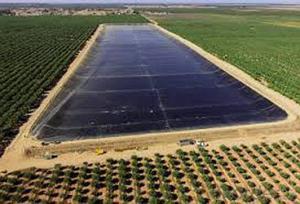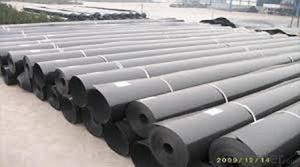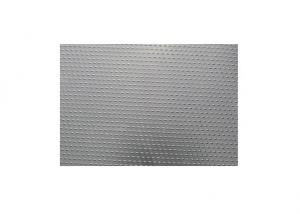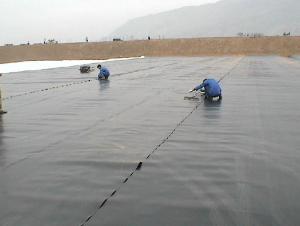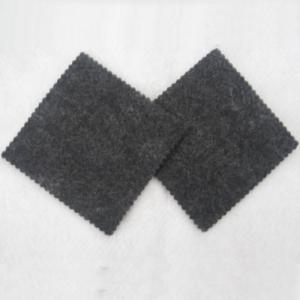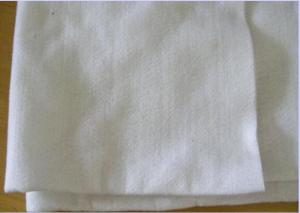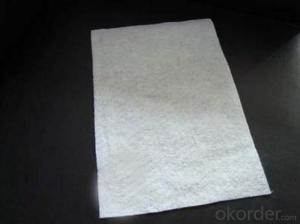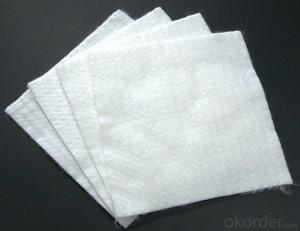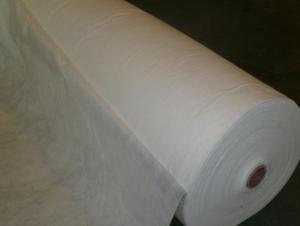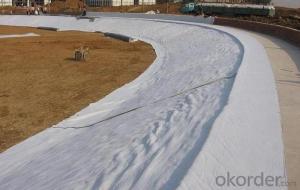Polyethylene HDPE Polyvinyl Chloride Geomembrane with Geotextile Fabric Mesh
- Loading Port:
- China main port
- Payment Terms:
- TT OR LC
- Min Order Qty:
- 1000 m²
- Supply Capability:
- 1000000 m²/month
OKorder Service Pledge
OKorder Financial Service
You Might Also Like
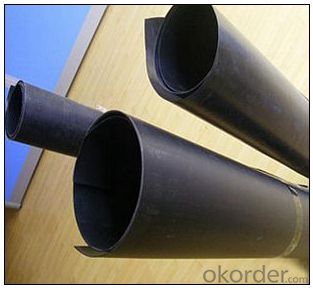
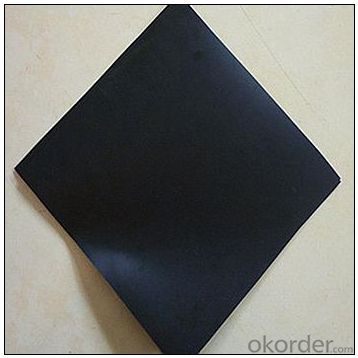
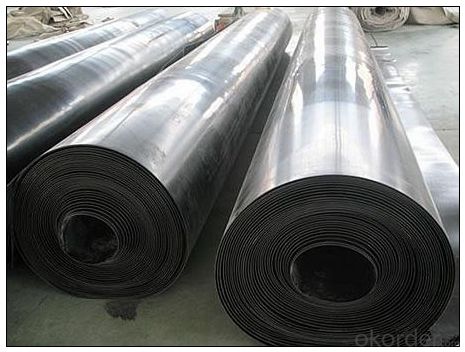
Type:
Waterproof Membrane
Place of Origin:
Shandong, China (Mainland)
Brand Name:
CMAX
Model Number:
ISO
Sample:
Available
Color:
customized
width:
4m-9m
thickness:
1mm-3mm
length:
customized
material:
geotextile+HDPE membrane/geote
Classified by Material
1. HDPE Geomembrane
2. LDPE Geomembrane
3. LLDPE Geomembrane
Technical specifications of HDPE geomembrane:
a) Density ≥ 0.94g/m2
b) Tensile Strength ≥25Mpa
c) Elongation at Break ≥ 550%
d) Right-angled Tear ≥ 110N/mm
e.)Puncture Strength ≥ 550N
f.) Permeability Coefficient ≤1.0xe-13g.cm/(cm2.S.Pa)
g.) -70oC Low Temperature Impact Brittle Property: good.
h.) Chemical Resistance: at 80oC, marinated in 5g/L Nacl for a long time, it will not erode or swell.
Packaging & Shipping
Packing: PLASTIC FILM INSIDE, AND WOVEN BAG OUTSIDE
Shipping: About 15 days after receipt the deposit
Our Service
Quality assurance
1.On a regular basis or as per your request,we entrust national testing agencies to conduct quality inspections
2. Strictly in accordance with the ISO9001-2008 international quality system standard,we monitor and manage the whole process throughout production,quality testing,and measurement to ensure product quality
3. For quality-related construction delay or substandard construction(except for damage or losses due to customer’s responsibility or irresistible natural disasters),we have refunding,replacement,and repair services.We will respond to customers’ feedbacks on quality issues within 24 hours.
After-sales service
1.In order to provide customers with comprehensive technical support,we will provide technical and other related information upon request in a timely manner.
2.In required,we will appoint specialized technicians to the construction site to give technical trainings to construction people,and offer technical guidance throughout the whole construction process.
3.For damage due to shipment and delivery,after we receive the complaint,we will check the issure through provided pictures and videos.If our responsibility is confirmed,we wil offer free replacement.
4.When the construction is completed,as your request,our technical staff may participate in the final acceptance.
FAQ:
Q: What kind of payments does jenor support?
A: T/T, L/C, Cash are accepted.
Q: Do you charge for the samples?
A: Accordeing to our company policy, the samples are free, we only charge the freight fee. And we will return the freight fee during the next order.
Q: Can you produce according to customers' design?
A: Sure, we are professional manufacturer, OEM and ODM are both welcome.
Q: Do you have other products?
A: Yes, please check the pictures:
- Q: Geotextile water filter?
- Geotextile from the filter, filter the role of water, but soil, I am specializing in the production of geotextiles
- Q: Can geotextiles be used for soil reinforcement in embankments?
- Yes, geotextiles can be used for soil reinforcement in embankments. Geotextiles are often used in civil engineering projects to enhance soil stability and prevent erosion. In embankments, they can be placed between soil layers to distribute loads, improve drainage, and increase the overall strength and stability of the structure.
- Q: Can geotextiles be used in foundations and retaining walls?
- Yes, geotextiles can be used in foundations and retaining walls. Geotextiles are commonly used in these applications to improve soil stability, prevent erosion, and provide drainage. They are effective in separating different soil layers, reinforcing the soil, and reducing water infiltration.
- Q: Can geotextiles be used in the construction of landfills?
- Yes, geotextiles can be used in the construction of landfills. Geotextiles serve as a barrier to prevent the mixing of different types of soil layers, provide separation between different materials, and enhance the stability and strength of the landfill structure. They also help in controlling erosion and drainage within the landfill site.
- Q: Are geotextiles resistant to chemical leaching?
- Yes, geotextiles are generally resistant to chemical leaching. They are designed to have low permeability and are made from materials that can withstand exposure to various chemicals without significant degradation or leaching. However, the level of resistance may vary depending on the specific type and quality of geotextile used.
- Q: How to apply the geotextile of the retaining wall filter
- I am specializing in the production of geotechnical materials, wish smooth
- Q: Nail cave geotextile with a nail where?
- Hardware market can be nails, I professional production geotextile geomembrane and other geotechnical materials, wish smooth
- Q: What are the key considerations for geotextile installation in seismic zones?
- Some key considerations for geotextile installation in seismic zones include ensuring proper anchoring and securing of the geotextile material to withstand the potential ground movements during an earthquake, selecting a geotextile that is specifically designed and tested for seismic applications, and performing a thorough site assessment to understand the soil conditions and potential seismic hazards. Additionally, it is important to follow recommended installation guidelines and collaborate with experienced engineers or geotechnical experts to ensure the geotextile is installed correctly and effectively in seismic zones.
- Q: What are the advantages of using geotextiles in green roof systems?
- The advantages of using geotextiles in green roof systems include improved drainage, erosion control, and increased structural stability. Geotextiles help prevent soil erosion by allowing water to drain through while retaining the soil. They also provide a strong base for the green roof system, enhancing its structural integrity. Additionally, geotextiles can act as a filter, removing pollutants and sediments from rainwater runoff, resulting in improved water quality.
- Q: What are the different types of geotextiles?
- There are several different types of geotextiles, including woven geotextiles, non-woven geotextiles, and knitted geotextiles. Woven geotextiles are made by weaving synthetic fibers together, creating a strong and durable material. Non-woven geotextiles are made by bonding or felting synthetic fibers together, providing filtration and drainage capabilities. Knitted geotextiles are produced by interlocking synthetic yarns, offering high tensile strength and flexibility. Each type of geotextile serves specific purposes in various applications, such as erosion control, soil stabilization, and drainage systems.
Send your message to us
Polyethylene HDPE Polyvinyl Chloride Geomembrane with Geotextile Fabric Mesh
- Loading Port:
- China main port
- Payment Terms:
- TT OR LC
- Min Order Qty:
- 1000 m²
- Supply Capability:
- 1000000 m²/month
OKorder Service Pledge
OKorder Financial Service
Similar products
Hot products
Hot Searches
Related keywords

